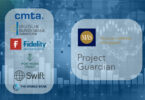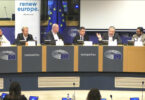Today the World Economic Forum (WEF) and Global Blockchain Business Council (GBBC) published a report on blockchain standards, the Global Standards Mapping Initiative. The paper does a good job of outlining most of the blockchain standards initiatives underway. It also notes that some standard-setting groups announced at the height of the blockchain hype have failed to publish any work.
“We all know DLT is a network technology and for it to reach mass scale adoption you need strong synergies where every single participant on the value chain experiences the value,” said Mariana Gomez de la Villa, DLT Program Director at ING. “As an ecosystem, we won’t be able to deliver value without developing clear standards.”
There are several challenges in developing blockchain standards. Firstly, unlike the internet, there is no single body such as ICANN, which oversees internet IP addresses, domain names and policy.
Hence there is a mix of standard-setting bodies ranging from the primary standards bodies such as ISO to industry-focused initiatives, bodies that specialize in one technical subsector such as identity, and those that are limited geographically.
Looking at the subsectors, the list isn’t short. It includes tokens, digital assets, security, identity, IoT, cryptocurrency payment, DLT requirements, DLT taxonomy and DLT terminology. That’s before one looks at specific industry sectors.
The WEF identified a lack of consistency in terminology. That even applies to the definition of a blockchain or distributed ledger, which differs between the ISO and ITU-T. Distributed ledger technology (DLT) has several elements in the architecture and the IEEE and ITU-T also classify these elements in different ways.
While the ISO and ITU-T are global in reach, the former mainly has conveners from Europe, North America and Australia, and China dominates the ITU-T standards. As an aside, that’s something the Chinese have been trumpeting loudly.
Another challenge relates to intellectual property asserted over standards and the idea that “the paywall associated with some standards goes against the ethos of blockchain technology.”
The paper also explores areas where overlapping standards are being developed as well as gaps. Many industry verticals are exploring DLT standards, but a few aren’t. Other gaps include when to apply DLT, the core technical elements and performance tests.
The report concludes with making a series of recommendations, such as ensuring coordination between standard setting organizations and using precise language.
One of the key aims of standards is to provide clarity and interoperability. A takeaway is the proliferation of standards bodies and the sheer number of areas covered highlights the current complexity of the blockchain sector.






